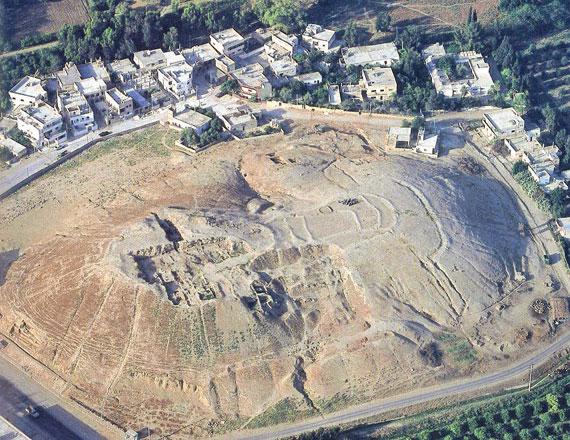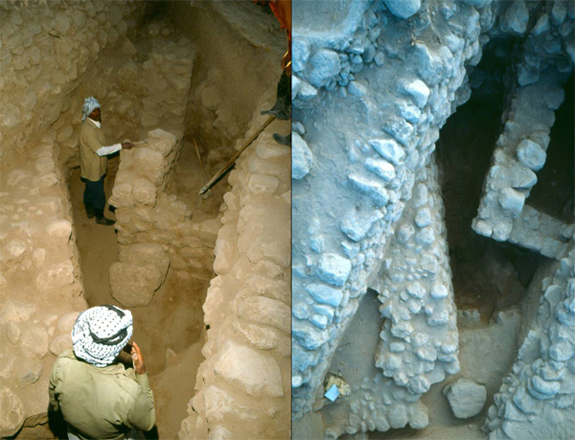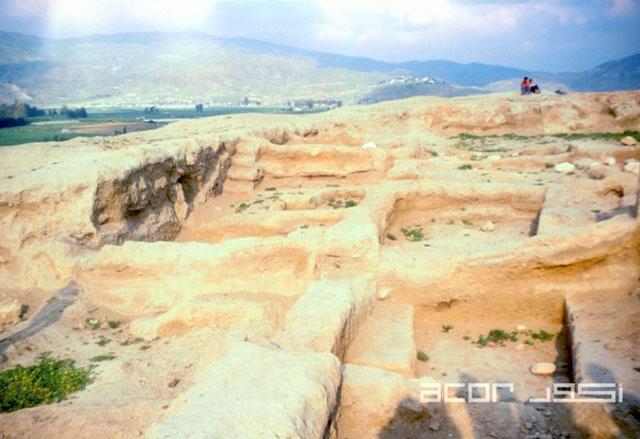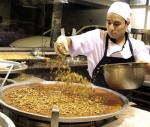You are here
New Tell Deir Alla excavations suggest previously unknown urbanisation
By Saeb Rawashdeh - Jun 16,2019 - Last updated at Jun 16,2019

An aerial view of Tell Deir Alla archaeological site in the Jordan Valley. Recent excavations show a previously unrecorded level of urbanisation at the site (Photo courtesy of Zeidan Kafafi)
AMMAN — New finds at Tell Deir Alla in the Jordan Valley contradict previously published results that the north side of the site was used for cultic purposes, according to a Jordanian archaeologist.
“Tell Deir Alla sits in the long north-south Rift Valley, in an area called Ghawr Abu Ubayda,” Professor Zeidan Kafafi from Yarmouk University told The Jordan Times in a recent e-mail interview, adding that despite limited rainfall, the Jordan Valley is suitable for winter grazing due to its moderate temperature.
Excavations conducted at the site in 1994 and 1996 showed evidence of the south-western limits of a Late Bronze Age settlement, including an extra-mural metalworking area and commercial storage facilities, the professor said.
“During the last season, it was decided to extend the excavation to other areas to envisage more data related to the Later Bronze and the Iron ages,” Kafafi continued, adding that a new area has been excavated on the western part of the southern slope of the hill.
Further to the south, the team found heavily-burnt debris from the final stages of the Late Bronze Age (ca. 1550-1200 BC), with traces of bronze work, including crucibles, Kafafi said.
“The excavations, in squares located on the southern slope of the site, indicated that a line of boulders served as a foundation for a massive enclosing mud-brick wall. This wall is connected with other thick, mud-brick walls,” the archaeologist highlighted, adding that the wall followed the contour of the hill.
The excavators argue that this enclosure is an indication of urbanisation, and that the settlement must have been a town by the end of the Late Bronze Age, which earlier excavations had failed to determine, according to Kafafi.
“Another phase of occupation has been recognised in this area, and belongs to the 13th-12th centuries BC. During this phase, the earlier walls were reused, additional walls were reconstructed and floors and courtyards were laid down,” the professor pointed out.
Apparently, it seems that the settlement grew far beyond the city walls, which no longer enclosed the entire site, he speculated, adding that there was no gap in occupation between this phase and the earlier one.
“Collared-rim jars dated to the beginning of the 13th century BC were encountered, among other objects belonging to this phase,” Kafafi noted, saying that most of the excavated layers belonging to this period suggested major destruction from a fire.
Nevertheless, the results of excavations also yielded architectural clay tablets, similar to sanctuary-scarab seal impressions and large storage jars with collared rims dating to around 1200BC.
“The archaeological excavations at Tell Deir Alla have shown that it was occupied from around 1700BC until 350BC,” Kafafi explained.
“Despite the fact that this architectural complex has not been completely uncovered, its plan and the archaeological finds recovered from within it suggest that it was used for domestic purposes, or perhaps as an administrative building,” he claimed, adding that the building’s layout and construction method is indicative of the so-called “pillared house”, present in the ancient Near East.
Several Late Bronze Age sites in Jordan and Palestine have domestic buildings of the same architectural type; in Jordan these sites include Tell Irbid, Tell Al Fukhar, Tell Al Umayri, Sahab, Al Lajjun, Jawa and Mudayna Al Muarrajah, according to Kafafi.
“A bronze axe was found in the courtyard,” Kafafi said, adding that the buildings have several rooms where pottery, decorated with “chocolate-on-white paintings from the Middle Bronze Age or the beginning of the Late Bronze Age”, was found.
Related Articles
AMMAN — According to the researcher Larry Herr, the Iron Age II A represented the 10th century BC, the Iron Age II B period lasted between t
AMMAN — The site of Tell Deir ‘Alla, in the central Jordan Valley, was a settlement during the 13th century BC and functioned as a town, not
AMMAN — professor Zeidan Kafafi studied rural societies and their life in the Ghor Abu ‘Obeideh region during the Iron I and II, and t















